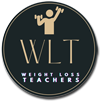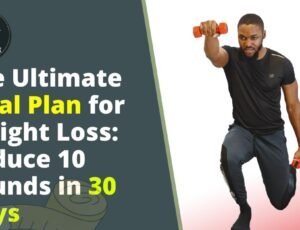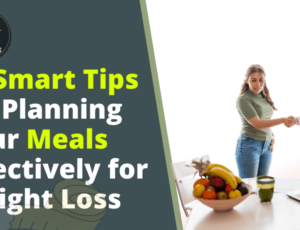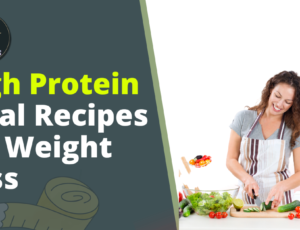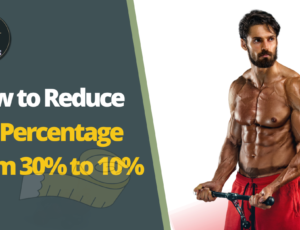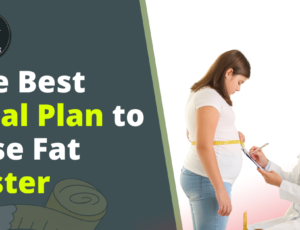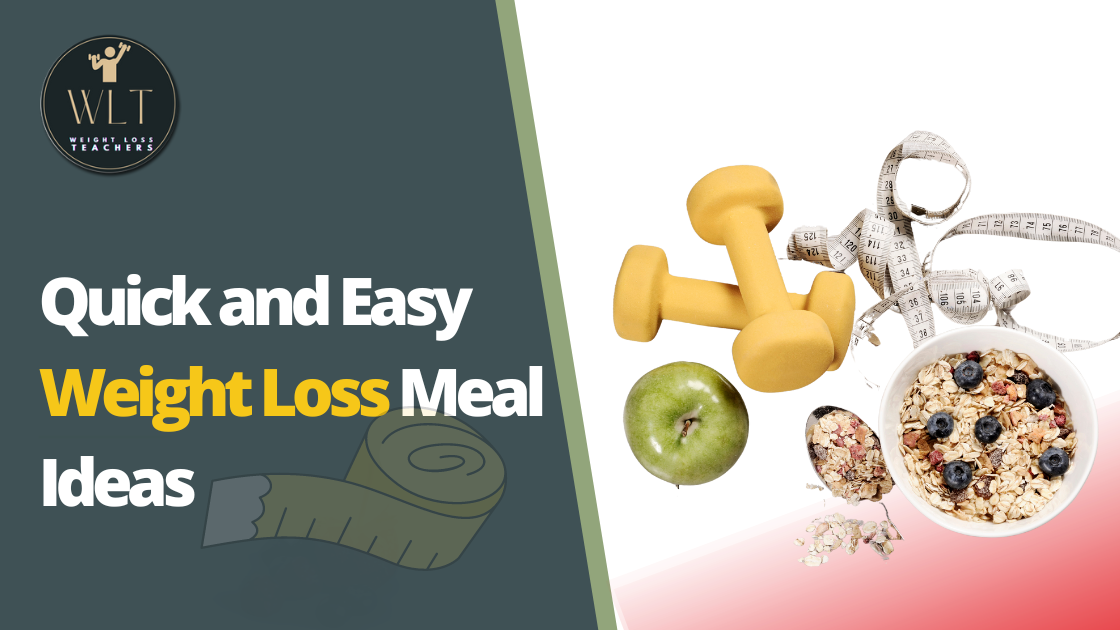
Quick and Easy Weight Loss Meal Ideas
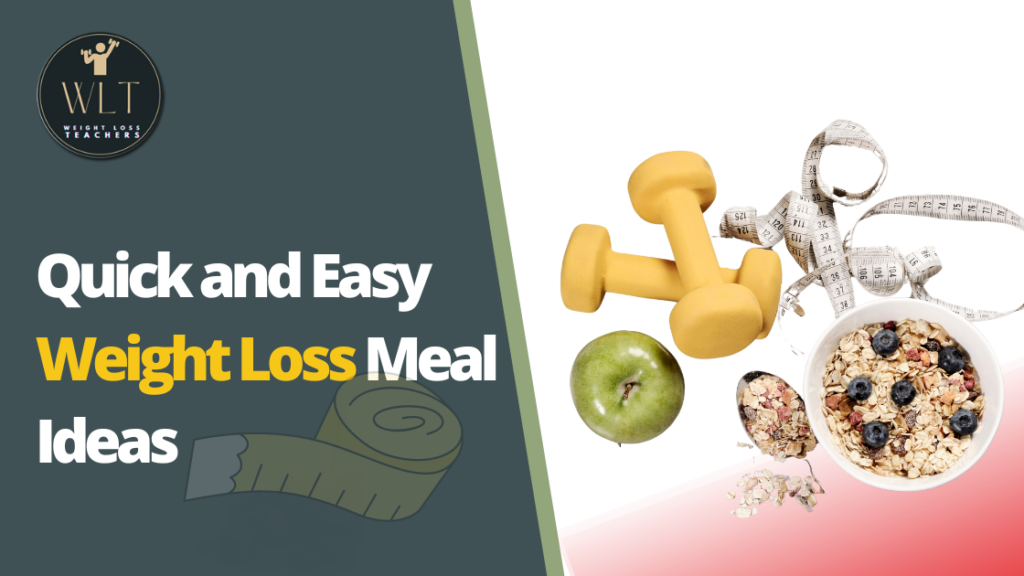
In today’s fast-paced world, maintaining a healthy weight can be a challenging task. The demands of work, family, and other responsibilities often leave little time for planning and preparing nutritious meals.
Table of Contents
Introduction
However, the good news is that healthy eating doesn’t have to be complicated or time-consuming. With the right knowledge and a bit of creativity, you can create quick and easy weight loss meal ideas that are not only delicious but also help you shed those extra pounds.
In this comprehensive guide, we will explore various aspects of quick and easy weight loss meal ideas. We’ll delve into the science of weight loss, the importance of a balanced diet, and provide you with a plethora of meal ideas and recipes that are not only effective for weight loss but also easy to incorporate into your daily routine.

Understanding the Science of Weight Loss

Before embarking on a journey to discover quick and easy weight loss meal ideas, it is imperative to gain a comprehensive understanding of the science behind weight loss. This knowledge will serve as a solid foundation upon which you can build your strategies for achieving your weight loss goals. Weight loss is a multifaceted process, and several key concepts are crucial to comprehend in this endeavor.
2.1. Caloric Deficit
At the heart of weight loss lies the fundamental concept of a caloric deficit. This concept is relatively simple yet plays a pivotal role in determining whether you lose, gain, or maintain your weight. In essence, a caloric deficit occurs when you consume fewer calories than your body requires to maintain its current weight. This deficit forces your body to tap into its energy reserves, primarily stored fat, to make up for the energy shortfall.
The average daily caloric requirement for an individual varies based on factors such as age, gender, activity level, and metabolism. However, as a general guideline, most adults require approximately 2,000 to 2,500 calories per day. This caloric intake allows the body to function optimally without any significant weight fluctuations. However, it is important to note that creating a caloric deficit does not mean starving yourself. Extreme caloric restriction can lead to muscle loss, nutritional deficiencies, and other health issues. Instead, it is about finding a sustainable balance between calorie intake and expenditure.
2.2. Metabolism
Metabolism is a complex set of chemical processes that occur within the body to convert the food you consume into energy. It is often described as the engine that drives all bodily functions. Understanding your metabolism is crucial when aiming for weight loss because it influences how efficiently your body burns calories.
Metabolism varies from person to person, primarily due to genetic factors and muscle mass. Some individuals have a naturally faster metabolism, allowing them to burn calories more quickly, while others may have a slower metabolism, making it easier for them to gain weight. Muscle mass is another significant contributor to metabolism. Muscle tissue burns more calories at rest compared to fat tissue. This is why strength training and building muscle can be beneficial for weight loss – it helps increase your resting metabolic rate.
Incorporating regular physical activity into your routine can also have a positive impact on your metabolism. Activities such as cardio exercises and strength training can help boost your metabolism, making it easier to create and maintain a caloric deficit.
2.3. Macronutrients
To achieve effective and sustainable weight loss, it is essential to consider the role of macronutrients in your diet. Macronutrients are the three main components of food that provide energy and contribute to various bodily functions:
- Carbohydrates: Carbohydrates are the body’s primary source of energy. They are found in foods like grains, fruits, vegetables, and legumes. While they are essential for providing energy, it’s important to consume them in moderation, especially refined carbohydrates like sugary snacks and white bread.
- Proteins: Proteins are crucial for maintaining and repairing tissues in the body. They are also instrumental in keeping you feeling full and satisfied for longer periods. Lean sources of protein include chicken, turkey, fish, tofu, and legumes.
- Fats: Fats are necessary for overall health and play a vital role in several bodily functions, including the absorption of fat-soluble vitamins. However, not all fats are created equal. Healthy fats, like those found in avocados, nuts, and olive oil, should be prioritized over saturated and trans fats, which can be detrimental to your health.
Balancing these macronutrients in your meals is essential for effective weight loss. A well-rounded diet that includes a mix of carbohydrates, proteins, and healthy fats can help you maintain energy levels, prevent muscle loss, and manage cravings, all of which are essential for achieving your weight loss goals.
The Importance of a Balanced Diet for Sustainable Weight Loss
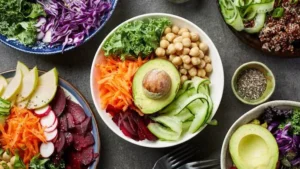
When embarking on a weight loss journey, it’s common to focus solely on calorie counting and restricting food intake. However, the quality of the food you consume is just as important as the quantity. A balanced diet ensures that you not only lose weight but also maintain your overall health. In this section, we will delve into the significance of a balanced diet for sustainable weight loss and explore various strategies to achieve it.
3.1. Portion Control
One of the key pillars of a balanced diet is portion control. Even the healthiest foods can contribute to weight gain if consumed in excessive amounts. Understanding appropriate portion sizes is crucial in managing your calorie intake effectively. Here are some practical tips for portion control:
- Smaller Plates: Using smaller plates can trick your brain into perceiving larger portions, making you feel satisfied with less food.
- Mindful Eating: Pay attention to your body’s hunger and fullness cues. Avoid distractions like television or computers while eating, as they can lead to mindless overeating.
- Measure and Weigh: In the beginning, measuring and weighing your food can help you develop a better sense of appropriate portion sizes. Over time, you’ll become more adept at estimating portions visually.
By practicing portion control, you can enjoy a variety of foods without the fear of overindulging, which is essential for maintaining a caloric deficit and achieving weight loss goals.
3.2. Fiber-Rich Foods
Fiber is a nutritional powerhouse when it comes to weight loss. It not only contributes to overall health but also plays a significant role in managing your appetite and regulating blood sugar levels. Incorporating fiber-rich foods into your diet can help you feel full and satisfied, reducing the likelihood of overeating. Here are some examples of fiber-rich foods:
- Fruits: Berries, apples, pears, and oranges are excellent sources of fiber and provide essential vitamins and minerals.
- Vegetables: Broccoli, spinach, carrots, and kale are packed with fiber and other nutrients.
- Whole Grains: Foods like brown rice, quinoa, oats, and whole wheat bread are high in fiber and provide sustained energy.
- Legumes: Beans, lentils, and chickpeas are rich in fiber and protein, making them ideal for weight loss.
By incorporating these fiber-rich foods into your diet, you can maintain a feeling of fullness, reduce overall calorie intake, and support your digestive health.
3.3. Lean Proteins
Protein is a vital component of a balanced diet, especially when aiming for weight loss. It helps build and repair tissues, supports muscle health, and contributes to a sense of fullness. Including lean protein sources in your meals can prevent muscle loss and reduce the temptation to overeat. Here are some examples of lean protein sources:
- Poultry: Chicken and turkey breast are lean protein sources that are low in saturated fats.
- Fish: Salmon, tuna, and tilapia are rich in protein and healthy omega-3 fatty acids.
- Tofu and Tempeh: These plant-based proteins are suitable alternatives for vegetarians and vegans.
- Legumes: Beans, lentils, and chickpeas provide both protein and fiber, making them an excellent choice for weight loss.
Incorporating lean proteins into your diet not only supports your weight loss goals but also helps maintain muscle mass and promotes a feeling of fullness, reducing the likelihood of snacking on high-calorie foods.
3.4. Healthy Fats
Contrary to the misconception that all fats are detrimental to weight loss, healthy fats are an essential part of a balanced diet. They provide numerous health benefits and can help control cravings, ultimately aiding in weight loss. Here are some sources of healthy fats:
- Avocados: Avocado is a rich source of monounsaturated fats, which are heart-healthy and contribute to satiety.
- Olive Oil: Extra virgin olive oil is an excellent source of healthy fats and can be used for cooking and drizzling over salads.
- Nuts and Seeds: Almonds, walnuts, chia seeds, and flaxseeds are packed with healthy fats, fiber, and essential nutrients.
- Fatty Fish: Salmon, mackerel, and trout provide healthy omega-3 fatty acids, which have numerous health benefits.
By incorporating these healthy fats into your diet in moderation, you can enhance the taste and satisfaction of your meals while supporting your weight loss efforts.
3.5. Hydration
Often overlooked but equally crucial, proper hydration is a fundamental component of a balanced diet. Dehydration can lead to various issues, including fatigue, reduced energy levels, and even increased feelings of hunger. Sometimes, thirst is mistaken for hunger, leading to unnecessary calorie consumption. Here’s why hydration is essential for weight loss:
- Appetite Control: Drinking water before meals can help you feel fuller, reducing the likelihood of overeating during mealtime.
- Calorie-Free: Water is calorie-free, making it the ideal choice for quenching your thirst without adding unnecessary calories to your diet.
- Metabolism Boost: Staying hydrated supports your metabolism, enabling your body to efficiently burn calories.
Quick and Easy Weight Loss Meal Ideas
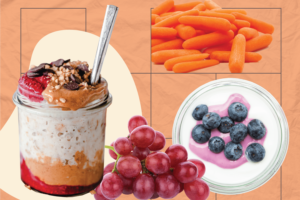
Now that you have a solid understanding of the science of weight loss and the importance of a balanced diet, let’s explore a wide range of quick and easy meal ideas designed to help you shed those extra pounds.
4.1 Quick and Easy Weight Loss Breakfast Ideas
Breakfast is often referred to as the most important meal of the day, and it plays a significant role in your weight loss journey. A well-balanced breakfast can kickstart your metabolism, provide essential nutrients, and give you the energy needed to tackle the day ahead. Here are some quick and easy breakfast ideas that are not only delicious but also conducive to weight loss:
4.1.1. Greek Yogurt Parfait
Greek yogurt is a nutritional powerhouse, packed with protein and probiotics that support digestion and keep you feeling full. This Greek Yogurt Parfait is a delightful and satisfying way to begin your day:
Ingredients:
- 1/2 cup Greek yogurt (plain, non-fat)
- 1/2 cup mixed berries (strawberries, blueberries, raspberries)
- 1 teaspoon honey
- 2 tablespoons granola (choose a low-sugar, whole-grain option)
Instructions:
- In a glass or bowl, layer the Greek yogurt.
- Add a layer of mixed berries on top of the yogurt.
- Drizzle honey over the berries for a touch of natural sweetness.
- Sprinkle granola on the very top for a satisfying crunch.
This parfait provides a balanced combination of protein, fiber, and antioxidants, making it an ideal breakfast choice for weight loss.
4.1.2. Oatmeal with Nut Butter
Oatmeal is a classic breakfast option that provides complex carbohydrates and fiber, promoting a sense of fullness that lasts throughout the morning. Adding nut butter and banana elevates the flavor and nutritional value:
Ingredients:
- 1/2 cup rolled oats
- 1 tablespoon almond butter or peanut butter (unsweetened)
- 1/2 banana, sliced
- A sprinkle of ground cinnamon
Instructions:
- Cook the rolled oats according to package instructions, using water or your preferred milk (such as almond milk).
- Once cooked, top the oatmeal with almond butter, banana slices, and a dash of cinnamon.
The combination of whole grains, healthy fats from the nut butter, and the natural sweetness of bananas makes this breakfast both satisfying and nutritious.
4.1.3. Veggie Omelette
Eggs are an excellent source of high-quality protein and essential nutrients. This Veggie Omelette is a versatile and quick breakfast option that allows you to incorporate vegetables into your morning routine:
Ingredients:
- 2 eggs
- Handful of spinach leaves
- 1/4 cup diced tomatoes
- 1/4 cup diced bell peppers (choose your favorite colors)
- 1 tablespoon grated cheese (opt for a reduced-fat option)
- Salt and pepper to taste
Instructions:
- Whisk the eggs in a bowl and season with a pinch of salt and pepper.
- Heat a non-stick skillet over medium-high heat and add a touch of cooking spray or olive oil.
- Pour the beaten eggs into the skillet and cook for a minute or two until they begin to set.
- Add the spinach, tomatoes, and bell peppers evenly across one half of the omelette.
- Sprinkle the grated cheese over the vegetables.
- Carefully fold the other half of the omelette over the vegetables, creating a half-moon shape.
- Continue to cook until the omelette is fully set and the cheese is melted.
This veggie-packed omelette provides protein, fiber, and essential vitamins, making it a filling and nutritious breakfast option.
4.1.4. Smoothie
Smoothies are a convenient and versatile way to start your day with a burst of nutrients. This Green Smoothie is packed with vitamins, minerals, and fiber:
Ingredients:
- Handful of spinach leaves
- 1/2 cup frozen mixed berries (strawberries, blueberries, raspberries)
- 1/2 banana
- 1/2 cup Greek yogurt (plain, non-fat)
- 1/2 cup unsweetened almond milk (or your preferred milk)
Instructions:
- Place all the ingredients in a blender.
- Blend until smooth and creamy.
- Adjust the consistency by adding more almond milk if needed.
This smoothie is an excellent source of antioxidants, fiber, and protein, making it an ideal choice for a quick and nutritious breakfast.
4.2 Lunch Ideas for Weight Loss and Sustained Energy
Lunch is a pivotal meal that not only refuels your body but also plays a crucial role in maintaining your energy levels and supporting your weight loss journey. To make the most of this midday meal, it’s essential to opt for balanced and satisfying options. Here are some quick and easy lunch ideas designed to keep you energized and on track with your weight loss goals:
4.2.1. Quinoa Salad
Quinoa is a versatile and nutritious grain that serves as an excellent base for a satisfying salad. When combined with protein-packed chickpeas and a medley of fresh vegetables, you have a wholesome and fiber-rich lunch option that will keep you feeling full and energized throughout the day.
Ingredients:
- 1 cup cooked quinoa (prepare according to package instructions)
- 1/2 cup canned chickpeas, drained and rinsed
- 1/2 cucumber, diced
- 1/2 cup cherry tomatoes, halved
- 1/4 cup finely diced red onion
- Lemon vinaigrette dressing (make by mixing lemon juice, olive oil, and a pinch of salt)
Instructions:
- In a large bowl, combine the cooked quinoa, chickpeas, cucumber, cherry tomatoes, and red onion.
- Drizzle the lemon vinaigrette dressing over the salad and toss to combine.
- Adjust seasoning with salt and pepper to taste.
- Serve immediately or refrigerate for a refreshing and nutrient-packed lunch option.
This quinoa salad provides a perfect blend of complex carbohydrates, plant-based proteins, and vitamins from fresh vegetables, making it a well-rounded and satisfying meal for your weight loss journey.
4.2.2. Grilled Chicken Wrap
Grilled chicken breast is a lean source of protein that can be the star of a delicious and satisfying wrap. Paired with whole wheat wrap, hummus, and mixed greens, you get a balanced lunch option that is rich in protein and fiber, keeping you full and energized for the rest of the day.
Ingredients:
- Grilled chicken breast (seasoned to your liking)
- 1 whole wheat wrap
- 2 tablespoons hummus (choose your favorite flavor)
- Mixed greens (such as spinach, lettuce, or arugula)
Instructions:
- Lay the whole wheat wrap flat on a clean surface.
- Spread a generous layer of hummus evenly across the wrap.
- Place the grilled chicken breast on top of the hummus.
- Add a handful of mixed greens on top of the chicken.
- Roll up the wrap, folding in the sides as you go to create a neat and compact package.
- Slice the wrap in half if desired and serve immediately.
This grilled chicken wrap is not only a flavorful and satisfying lunch option but also a great source of lean protein and healthy fats from the hummus.
4.2.3. Lentil Soup
Lentil soup is a hearty and nutritious option that’s perfect for lunch. Loaded with red lentils, carrots, celery, onions, garlic, and aromatic spices, it provides a balanced combination of fiber, protein, and essential nutrients.
Ingredients:
- 1 cup red lentils (rinsed and drained)
- 2 carrots, peeled and diced
- 2 celery stalks, diced
- 1 onion, chopped
- 2 cloves garlic, minced
- cups vegetable broth
- Spices (such as cumin, coriander, and paprika)
- Salt and pepper to taste
Instructions:
- In a large pot, sauté the chopped onions and minced garlic until fragrant and translucent.
- Add the diced carrots and celery and cook for a few minutes until they begin to soften.
- Stir in the red lentils and spices, allowing them to toast briefly.
- Pour in the vegetable broth and bring the mixture to a boil.
- Reduce the heat and let the soup simmer for about 20-25 minutes or until the lentils and vegetables are tender.
- Use an immersion blender to partially blend the soup, leaving some texture.
- Season with salt and pepper to taste.
This lentil soup is a comforting and filling lunch option that’s rich in plant-based protein and fiber. It’s an excellent choice for keeping your energy levels stable and supporting your weight loss goals.
4.2.4. Buddha Bowl
A Buddha Bowl is a vibrant and nutrient-dense lunch option that allows you to get creative with your ingredients. By combining brown rice, roasted vegetables, avocado, chickpeas, and a flavorful tahini dressing, you create a satisfying and balanced meal that is not only delicious but also packed with essential nutrients.
Ingredients:
- Cooked brown rice (prepare according to package instructions)
- Roasted vegetables (use your favorites, such as sweet potatoes, broccoli, and bell peppers)
- Sliced avocado
- Cooked chickpeas (canned or cooked from dried)
- Tahini dressing (create by mixing tahini, lemon juice, water, and a pinch of salt)
Instructions:
- In a bowl, start with a generous serving of cooked brown rice as the base.
- Arrange the roasted vegetables, avocado slices, and cooked chickpeas in sections over the rice.
- Drizzle the tahini dressing over the bowl to add flavor and creaminess.
- Feel free to sprinkle with your favorite herbs, seeds, or nuts for an extra touch of flavor and texture.
A Buddha Bowl offers a delightful medley of flavors, textures, and nutrients. It’s a satisfying lunch option that combines whole grains, healthy fats, plant-based proteins, and plenty of fiber to keep you full and focused throughout the day.
4.3 Weight Loss-Friendly Dinner Ideas for a Satisfying Evening
Dinner serves as the closing act of your day, providing you with the opportunity to refuel your body and prepare it for a restful night’s sleep. When striving for weight loss, it’s essential to choose dinner options that are not only delicious but also conducive to your goals. Here are some weight loss-friendly dinner ideas to help you make the most of your evening meal:
4.3.1. Baked Salmon with Asparagus
Salmon is renowned for its rich omega-3 fatty acids and high-quality protein content, making it an excellent choice for a satisfying yet low-calorie dinner. Pairing it with asparagus adds fiber and essential vitamins to the mix.
Ingredients:
- Salmon fillet
- Fresh asparagus spears
- Lemon slices
- Minced garlic
- Salt and pepper to taste
Instructions:
- Preheat your oven to 375°F (190°C).
- Place the salmon fillet on a baking sheet lined with parchment paper.
- Season the salmon with minced garlic, lemon slices, salt, and pepper.
- Arrange the fresh asparagus spears around the salmon.
- Bake in the preheated oven for 15-20 minutes or until the salmon flakes easily with a fork and the asparagus is tender.
This dish is not only a protein powerhouse but also provides a burst of flavor from the lemon and garlic. It’s a well-rounded dinner option that’s both nourishing and satisfying.
4.3.2. Zucchini Noodles with Pesto
If you’re looking for a lighter and lower-calorie alternative to traditional pasta, zucchini noodles (or “zoodles”) are an excellent choice. Paired with a flavorful pesto sauce, cherry tomatoes, and pine nuts, this dinner is a delightful twist on classic pasta dishes.
Ingredients:
- Zucchini noodles (you can make them using a spiralizer or buy pre-spiralized zucchini)
- Pesto sauce (homemade or store-bought)
- Cherry tomatoes, halved
- Pine nuts, toasted
Instructions:
- In a large skillet, heat a bit of olive oil over medium heat.
- Add the zucchini noodles and sauté for 2-3 minutes until slightly tender.
- Stir in the pesto sauce and cherry tomatoes, continuing to cook for another 2-3 minutes until everything is heated through.
- Serve the zucchini noodles topped with toasted pine nuts for added crunch and flavor.
This dinner option offers the satisfaction of a pasta dish without the heavy carbs, making it a fantastic choice for those aiming to reduce calorie intake while enjoying a delicious meal.
4.3.3. Stir-Fried Tofu and Veggies
For a plant-based dinner rich in protein and fiber, consider a stir-fry featuring tofu and an array of colorful vegetables. Customize the stir-fry sauce to your preference, and you have a nutritious and satisfying meal.
Ingredients:
- Firm tofu, cubed
- Assorted vegetables (broccoli, bell peppers, snap peas, carrots, etc.)
- Homemade stir-fry sauce (create your own using ingredients like soy sauce, garlic, ginger, and a touch of honey or maple syrup)
Instructions:
- Heat a bit of oil in a large skillet or wok over medium-high heat.
- Add the cubed tofu and cook until it’s golden brown on all sides.
- Remove the tofu from the skillet and set it aside.
- In the same skillet, add a bit more oil if needed and stir-fry the assorted vegetables until they’re crisp-tender.
- Return the tofu to the skillet and pour in the homemade stir-fry sauce.
- Toss everything together and cook for an additional 2-3 minutes until heated through.
This tofu and veggie stir-fry is not only satisfying but also customizable based on your taste preferences. It provides plant-based protein and a variety of vitamins and minerals.
4.3.4. Stuffed Bell Peppers
Stuffed bell peppers are a versatile and satisfying dinner option that allows you to get creative with fillings while keeping your calorie intake in check. Lean ground turkey, quinoa, black beans, and salsa come together for a flavorful and nutrient-packed meal.
Ingredients:
- Bell peppers (choose your preferred color)
- Lean ground turkey
- Cooked quinoa
- Black beans (canned, drained, and rinsed)
- Salsa (choose your preferred level of spiciness)
Instructions:
- Preheat your oven to 375°F (190°C).
- Cut the tops off the bell peppers and remove the seeds and membranes.
- In a skillet, cook the lean ground turkey until it’s browned and cooked through.
- Combine the cooked turkey, cooked quinoa, black beans, and salsa in a bowl, mixing well.
- Stuff each bell pepper with the turkey-quinoa mixture.
- Place the stuffed peppers in a baking dish and cover with aluminum foil.
- Bake in the preheated oven for 25-30 minutes or until the peppers are tender.
These stuffed bell peppers are a complete meal in themselves, providing a balance of protein, fiber, and essential nutrients. The salsa adds a burst of flavor and a touch of heat, making this dinner both satisfying and enjoyable.
Note: There might be affiliate links mentioned here. We may receive a commission if you purchase a product through an affiliate link. There is no additional charge for you. Please do your own research before making any online purchases.
Snacking Smart for Weight Loss
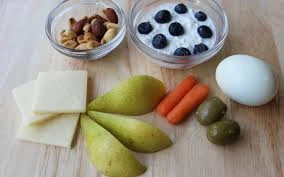
Healthy snacking is a valuable tool in your weight loss journey. It can help curb hunger between meals, prevent overeating during main meals, and provide your body with essential nutrients. However, the key to successful snacking for weight loss is making smart choices that are both satisfying and nutritious. Here are some smart snacking options to help you stay on track with your weight loss goals:
5.1. Mixed Nuts
Nuts are a fantastic snack option that combines healthy fats, protein, and fiber to keep you satisfied and provide lasting energy. A small handful of mixed nuts, such as almonds, walnuts, and cashews, can be a satisfying and nutritious choice. These nuts are rich in monounsaturated fats, which have been linked to improved heart health and may even aid in weight loss when consumed in moderation. Just be mindful of portion sizes, as nuts are calorie-dense.
5.2. Veggie Sticks with Hummus
Crunchy and colorful veggie sticks paired with a creamy dip like hummus make for a nutritious and satisfying snack. Carrot sticks, cucumber slices, and bell pepper strips are excellent choices for dipping. These vegetables are low in calories but high in fiber, vitamins, and minerals. Hummus, made from chickpeas, adds plant-based protein to the mix and is rich in fiber, which can help control your appetite.
5.3. Greek Yogurt with Berries
Greek yogurt is a protein powerhouse and makes for a delicious and satisfying snack option. When topped with a handful of fresh berries, it becomes a nutritious and sweet treat. Berries are rich in antioxidants, vitamins, and fiber, which can help keep you feeling full. Greek yogurt, with its higher protein content compared to regular yogurt, can also help promote satiety and maintain muscle mass during weight loss.
5.4. Air-Popped Popcorn
Popcorn can be a guilt-free snack when prepared the right way. Skip the butter and opt for air-popped popcorn, which is low in calories and provides whole grains and fiber. Season it with herbs, spices, or nutritional yeast for flavor without adding unnecessary calories. Nutritional yeast is a great option for those looking to add a cheesy flavor to their popcorn without the extra saturated fat found in butter or cheese.
When it comes to snacking for weight loss, portion control is essential. Even healthy snacks can contribute to weight gain if consumed in excessive amounts. Consider pre-portioning your snacks to avoid mindless eating. Additionally, listen to your body’s hunger cues and eat only when you’re truly hungry rather than out of habit or boredom.
Incorporating these smart snacking options into your daily routine can help you stay satisfied and on track with your weight loss goals. Remember that a well-balanced diet, which includes nutritious snacks, is a key component of successful and sustainable weight management.
Tips for a Successful Weight Loss Journey

Embarking on a weight loss journey can be both challenging and rewarding. To make your journey more effective and sustainable, consider incorporating the following tips into your approach:
6.1. Keep a Food Journal
Keeping a food journal is a powerful tool for weight loss. It involves tracking what you eat, when you eat, and how much you eat. Here’s how it can benefit your journey:
- Accountability: Writing down everything you eat creates a sense of accountability. It makes you more aware of your food choices and helps you avoid mindless eating.
- Identify Patterns: A food journal can reveal patterns in your eating habits. For instance, you may notice that you tend to snack on unhealthy foods when stressed. Identifying these patterns allows you to make targeted changes.
- Portion Control: Recording portion sizes helps you understand your calorie intake better. It’s easy to underestimate portion sizes, and a food journal can make you more mindful of portion control.
- Motivation: Seeing your progress in writing can be motivating. When you look back at your journal and see positive changes, it reinforces your commitment to your weight loss goals.
6.2. Practice Mindful Eating
Mindful eating is a practice that involves paying full attention to your eating experience. Here’s how it can contribute to your weight loss success:
- Savor Each Bite: Eating slowly and savoring each bite can help you enjoy your food more and feel satisfied with smaller portions.
- Recognize Hunger and Fullness: Mindful eating encourages you to listen to your body’s hunger and fullness cues. It helps you avoid overeating and promotes a healthier relationship with food.
- Reduced Emotional Eating: Mindful eating can reduce emotional eating by teaching you to identify emotional triggers and find alternative ways to cope with emotions.
- Improved Digestion: Eating mindfully can improve digestion by allowing your body to process food more efficiently. It can also reduce digestive discomfort.
6.3. Get Regular Exercise
While nutrition plays a significant role in weight loss, regular exercise is equally important. Here’s how exercise can enhance your weight loss journey:
- Boost Metabolism: Exercise increases your metabolism, helping your body burn more calories, even at rest. This can accelerate weight loss.
- Preserve Muscle Mass: When you lose weight, you want to lose fat, not muscle. Exercise, especially resistance training, helps preserve lean muscle mass during weight loss.
- Improve Mood: Physical activity releases endorphins, which can improve your mood and reduce stress. This can prevent emotional eating and enhance your overall well-being.
- Enhance Weight Maintenance: Regular exercise is crucial for maintaining weight loss. It helps you keep the weight off long-term.
6.4. Seek Support
Weight loss can be challenging, and seeking support can make a significant difference. Here are some ways to find the support you need:
- Join a Weight Loss Group: Consider joining a weight loss group, either in-person or online. Being part of a community with similar goals can provide motivation and accountability.
- Consult a Professional: A registered dietitian or nutritionist can provide personalized guidance tailored to your specific needs and goals.
- Share Your Journey: Talk to friends and family about your weight loss journey. Their encouragement and support can be invaluable.
- Online Resources: Utilize online resources, including forums, blogs, and apps, to connect with others on similar journeys and access valuable information.
Remember that weight loss is a gradual process, and it’s essential to be patient with yourself. Celebrate your successes along the way, and don’t be discouraged by setbacks. With commitment, consistency, and the right strategies, you can achieve your weight loss goals and enjoy a healthier, happier lifestyle.
FAQs (frequently Asked Questions)
Q1. What is the key concept behind weight loss?
A1. The fundamental concept behind weight loss is creating a caloric deficit, which means consuming fewer calories than your body needs to maintain its current weight. This deficit prompts your body to use stored energy, primarily from fat, leading to weight loss.
Q2. What role does metabolism play in weight loss?
A2. Metabolism is the set of chemical processes that convert food into energy within your body. Understanding your metabolism is essential because it influences how efficiently you burn calories. Factors like genetics, muscle mass, and physical activity affect your metabolism. Engaging in regular exercise can help boost your metabolism and support weight loss.
Q3. Why is it important to balance macronutrients in your diet for weight loss?
A3. Balancing macronutrients (carbohydrates, proteins, and fats) in your diet is crucial for effective weight loss. Each macronutrient plays a specific role in your body. Carbohydrates provide energy, proteins support muscle health and satiety, and healthy fats are necessary for overall well-being. Balancing these nutrients helps you maintain energy levels, prevent muscle loss, and manage cravings during your weight loss journey.
Q4. What is mindful eating, and how can it aid in weight loss?
A4. Mindful eating involves paying full attention to your eating experience, including the taste, texture, and sensations of food. Practicing mindful eating can help you avoid overeating, recognize hunger and fullness cues, and reduce emotional eating. It promotes a healthier relationship with food and can be a valuable tool for weight loss.
Q5. Why is exercise important for weight loss?
A5. Exercise is essential for weight loss because it helps boost metabolism, preserve lean muscle mass, improve mood, and enhance overall well-being. It increases the number of calories your body burns, making it easier to create a caloric deficit. Regular exercise is also crucial for maintaining weight loss in the long term.
Q6. How can I stay motivated during my weight loss journey?
A6. Staying motivated during a weight loss journey can be challenging, but there are several strategies you can use:
- Set achievable, specific goals.
- Track your progress and celebrate small successes.
- Find a support system, such as a weight loss group or friends and family.
- Focus on the benefits of a healthier lifestyle beyond just weight loss.
- Keep a positive mindset and be patient with yourself.
Q7. Are there any specific foods I should avoid while trying to lose weight?
A7. While there are no specific foods you must avoid entirely, it’s essential to limit or moderate certain foods for effective weight loss. These include sugary snacks, sugary beverages, processed foods, and foods high in saturated and trans fats. Balancing your overall diet and controlling portion sizes are more critical than completely eliminating specific foods.
Q8. What’s the role of hydration in weight loss?
A8. Proper hydration is essential for weight loss because it helps control appetite, supports metabolism, and prevents thirst from being mistaken for hunger. Drinking water before meals can help you feel fuller and reduce calorie intake. Staying hydrated ensures your body functions optimally during your weight loss journey.
Q9. How can I incorporate exercise into my daily routine for weight loss?
A9. Incorporating exercise into your daily routine for weight loss can be done gradually and tailored to your preferences. Start with activities you enjoy, such as walking, jogging, cycling, or dancing. Aim for at least 150 minutes of moderate-intensity aerobic exercise or 75 minutes of vigorous-intensity exercise per week, along with strength training exercises at least two days a week. Gradually increase the duration and intensity of your workouts as your fitness improves.
Q10. What should I do if I hit a weight loss plateau?
A10. Weight loss plateaus are common and can be frustrating. To break through a plateau, consider the following strategies:
- Reevaluate your calorie intake and ensure you’re still in a caloric deficit.
- Adjust your exercise routine by increasing intensity or trying new activities.
- Focus on strength training to build lean muscle, which can boost metabolism.
- Manage stress and get enough sleep, as these factors can affect weight loss.
- Consult with a healthcare professional or registered dietitian for personalized guidance.
Conclusion
Quick and easy weight loss meal ideas don’t have to be bland or boring. By understanding the science of weight loss, embracing a balanced diet, and incorporating nutritious meals into your daily routine, you can achieve your weight loss goals while enjoying delicious and satisfying food. Remember that consistency and mindfulness are key to long-term success on your journey to a healthier you. So, start experimenting with these meal ideas, stay committed, and watch the pounds melt away. Your body will thank you for it.
